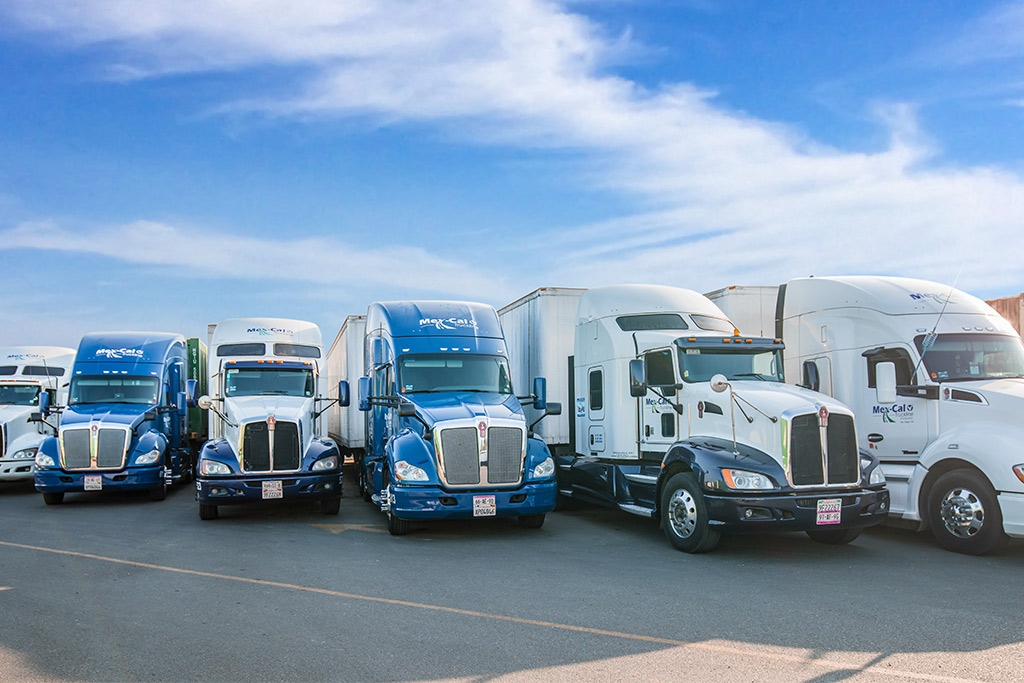Why Compliance Training Matters for US-Mexico Logistics Teams
Cross-border logistics between the United States and Mexico can make the process feel impossible. Security protocols grow stricter, documentation requires more and more use of technology, and ongoing tariff adjustments make compliance a real challenge for logistics teams. In this environment, compliance training is the only way to keep your teams on top of an increasingly complicated set of rules and regulations.
For logistics professionals navigating the intricate web of customs requirements, proper training provides the foundation needed to achieve seamless border crossings and avoid costly penalties. With U.S. Customs and Border Protection collecting over $50 billion annually in duties, taxes, and fees, the financial implications of non-compliance can be devastating. Effective training programs extend beyond basic rule-following to foster a culture of understanding and responsibility, enabling teams to standardize procedures, identify potential issues early, and stay current with industry trends.
Understanding US-Mexico Logistics Compliance: Key Requirements and Challenges

For any logistics operation spanning the US-Mexico border, success hinges on having the right paperwork in place. From Pedimentos to commercial invoices and bills of lading, every document serves a legal and logistical purpose.
Essential Documents and Legal Requirements
Understanding what documentation is required is non-negotiable. These include:
- The Pedimento (customs declaration)
- Commercial invoices in Spanish
- Bills of lading
- Certificates of origin for USMCA compliance
Additionally, Mexican importers must register with the Padrón de Importadores, with some industries needing further sector-specific registrations. Licensed customs brokers (agente aduanal) are often a legal requirement for compliance.
Evolving Compliance Standards and New Regulations
Recent changes in cross-border compliance are reshaping the landscape. Key updates include:
- Digitization of documents for faster customs clearance
- Enhanced security protocols with stricter cargo checks and tracking
- Environmental mandates promoting low-emission vehicles through regulatory incentives
| Challenge Category | Specific Issues | Impact on Operations |
| Documentation Compliance | Incomplete forms, language requirements, and record retention (5 years) | Delays, fines, and denied entry |
| Tariffs & Classification | Harmonized Tariff Schedule misclassification, shifting duty rates | Unexpected costs, audit risks |
| Sector-Specific Rules | Textiles, apparel, and footwear special requirements, prohibited goods | Additional registration, waiting periods |
| Insurance & Liability | U.S. carrier insurance is invalid in Mexico | Increased carrier liability, need for Mexican coverage |
The complexity of these requirements underscores why logistics teams must remain vigilant about compliance. U.S. carriers must understand that their standard insurance isn’t valid in Mexico, creating additional liability concerns when crossing the border. As regulatory frameworks continue to evolve, the need for comprehensive compliance training becomes increasingly evident.
Benefits of Comprehensive Compliance Training for Logistics Teams

In an environment where non-compliance carries significant consequences, comprehensive training programs help logistics teams to save money while improving the effectiveness of their work. Consider the fact that the U.S. Customs and Border Protection collects over $50 billion annually in duties, taxes, and fees, plus an additional $100 million from trade enforcement audits. The financial fiscal approach is to keep teams up to date on the most recent compliance regulations. Here are some other reasons to use compliance training across the U.S. and Mexico.
Reducing Legal Risks and Operational Delays
First and foremost, well-trained logistics teams significantly reduce the risk of legal infractions and their associated penalties. When staff thoroughly understand documentation requirements, proper cargo classification, and sector-specific regulations, they can prevent costly delays at border crossings. Consider that U.S. motor carrier insurance is typically invalid in Mexico, making proper training on liability issues critical to avoiding unexpected financial exposure.
Fostering a Culture of Accountability
Beyond financial protection, effective compliance training cultivates an atmosphere of responsibility and awareness. This culture extends beyond basic rule-following to fostering understanding and accountability at all levels. When compliance becomes integrated into daily operations rather than treated as a separate function, teams develop standardized procedures that reduce errors, streamline processes, and identify potential issues before they become serious problems.
Maintaining Regulatory Awareness and Competitive Advantage

Another crucial benefit is allowing teams to maintain up-to-date knowledge amid rapidly changing regulations. With regular training updates, logistics professionals stay current on industry trends, tariff adjustments, and documentation requirements, like the five-year record retention mandate for Mexican customs documentation. Organizations that prioritize early adaptation to regulatory changes gain competitive advantages in the marketplace while strengthening their position with customs authorities.
Essential Elements of Effective Compliance Training Programs
While understanding the benefits of compliance training is crucial, implementing effective programs requires thoughtful design and strategic execution. The most impactful training initiatives for US-Mexico logistics teams incorporate several key elements that drive knowledge retention and practical application.
Applying Real-World Scenarios to Build Practical Skills
First, effective programs integrate real-world scenarios and case studies that bring abstract regulations to life. When logistics professionals encounter simulations of actual documentation challenges, such as proper completion of the Pedimento form or accurate product classification under the Harmonized Tariff Schedule, they develop practical skills that translate directly to border operations. These scenarios should reflect common pitfalls, like documentation errors that could trigger the five-year record retention audits required by Mexican customs authorities. By practicing responses to realistic challenges, teams build confidence in handling complex compliance situations before facing them at the border.
Leveraging Digital Training Platforms for Consistency and Scale
Modern compliance training increasingly leverages digital platforms and logistics-specific Learning Management Systems (LMS) to deliver consistent education across distributed teams. These platforms offer many advantages: on-demand access to training materials, standardized content delivery, and sophisticated tracking of completion and comprehension. Logistics LMS solutions bridge knowledge gaps while boosting performance and reducing costs associated with traditional training methods. As cross-border processes increasingly shift toward electronic documentation, digital training platforms align naturally with the technological evolution of the industry itself.
Establishing Ongoing Training to Keep Pace with Regulatory Change
Perhaps most critically, effective compliance programs establish regular updates and refresher sessions to address the constantly evolving regulatory landscape. With frequent changes to security protocols, documentation requirements, and tariff structures, one-time training quickly becomes outdated. Organizations that implement scheduled refresher courses and provide immediate updates following regulatory changes create a culture of continuous learning that keeps pace with compliance requirements. These regular sessions should cover both fundamental principles and emerging trends, ensuring teams maintain both foundational knowledge and awareness of recent developments.
Strategic Advantages: Building Trust, Reputation, and Competitive Edge

Beyond regulatory compliance, comprehensive training programs offer logistics teams significant strategic advantages in the competitive US-Mexico cross-border landscape. Organizations that prioritize compliance excellence position themselves as trusted partners whose operations exemplify reliability and professionalism. This reputation extends beyond mere operational efficiency; it becomes a tangible business asset that resonates with partners, clients, and regulatory authorities alike. When logistics teams consistently demonstrate their deep understanding of compliance requirements, they build credibility that translates into stronger business relationships and repeat business opportunities.
Well-trained logistics teams also develop remarkable resilience and adaptability in the face of constantly shifting regulations. When team members thoroughly understand the underlying principles of compliance, they can quickly adjust to regulatory changes without disrupting operations. This adaptability represents a significant competitive advantage, as organizations that embrace early adaptation to regulatory shifts strengthen their market position while competitors struggle to catch up.
Aligning Compliance with Sustainability Goals
Perhaps most significantly, comprehensive compliance training enables logistics teams to support the sustainability and security initiatives increasingly demanded in modern cross-border operations. As environmental regulations continue to evolve, with new rules implemented to reduce the carbon footprint of cross-border shipping and incentives offered for utilizing eco-friendly vehicles, trained teams can navigate these requirements while supporting broader corporate sustainability goals.
Strengthening Supply Chain Security Through Training
Similarly, security initiatives such as mandatory C-TPAT certification and advanced cargo tracking systems represent not only compliance requirements but also opportunities for logistics teams to demonstrate their commitment to securing supply chains. When team members understand these initiatives thoroughly, they transform compliance from a bureaucratic necessity into a strategic advantage that improves overall supply chain integrity.
Investing in Compliance for Long-Term Success
As we’ve explored throughout this article, comprehensive compliance training is not merely an operational checkbox but a strategic imperative for US-Mexico logistics teams. Effective training programs empower teams to navigate complex documentation requirements, stay current with evolving regulations, and develop standardized procedures that reduce errors and delays.
To maximize the impact of compliance initiatives, consider partnering with experienced logistics consultants who understand the nuances of both U.S. and Mexican regulatory frameworks. These partnerships provide tailored training solutions that address your specific operational challenges, helping you stay ahead of policy changes. Working with specialists who understand both customs systems ensures your team receives practical guidance rather than generic information, creating immediate benefits.
Keep your logistics team equipped to handle the complexities of US-Mexico trade with Mex-Cal Truckline’s expert compliance training. Our programs are designed to enhance your team’s understanding of evolving regulations, streamline customs processes, and minimize legal risks. Stay ahead in the competitive logistics industry by fostering a culture of responsibility and efficiency. Ready to elevate your operations? Let’s talk!





